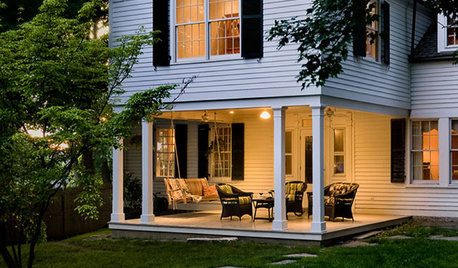Complete Lawn Renovation Advice..
JoelCO
10 years ago
Related Stories

CONTRACTOR TIPSYour Complete Guide to Building Permits
Learn about permit requirements, the submittal process, final inspection and more
Full Story
BATHROOM DESIGNDreaming of a Spa Tub at Home? Read This Pro Advice First
Before you float away on visions of jets and bubbles and the steamiest water around, consider these very real spa tub issues
Full Story
KITCHEN DESIGNSmart Investments in Kitchen Cabinetry — a Realtor's Advice
Get expert info on what cabinet features are worth the money, for both you and potential buyers of your home
Full Story
DECORATING GUIDES10 Design Tips Learned From the Worst Advice Ever
If these Houzzers’ tales don’t bolster the courage of your design convictions, nothing will
Full Story
HEALTHY HOMEHow to Childproof Your Home: Expert Advice
Safety strategies, Part 1: Get the lowdown from the pros on which areas of the home need locks, lids, gates and more
Full Story
FARM YOUR YARDAdvice on Canyon Farming From L.A.'s Vegetable Whisperer
See how a screened garden house and raised beds help an edible garden in a Los Angeles canyon thrive
Full Story
Straight-Up Advice for Corner Spaces
Neglected corners in the home waste valuable space. Here's how to put those overlooked spots to good use
Full Story
SELLING YOUR HOUSEThe Latest Info on Renovating Your Home to Sell
Pro advice about where to put your remodeling dollars for success in selling your home
Full Story
REMODELING GUIDESHow to Protect (Even Enhance!) Your Relationship While Renovating
No home improvement project is worth a broken heart. Keep your togetherness during a remodel with this wise advice
Full Story
LANDSCAPE DESIGNGet Along With Less Lawn — Ideas to Save Water and Effort
Ditch the mower and lower your water bill while creating a feast for the eyes with diverse plantings and gathering places
Full StoryMore Discussions






mulchmama
mulchmama
Related Professionals
Beachwood Landscape Architects & Landscape Designers · Montgomeryville Landscape Architects & Landscape Designers · Rancho Palos Verdes Landscape Architects & Landscape Designers · Waterbury Landscape Contractors · Alpharetta Landscape Contractors · Del Aire Landscape Contractors · Flagstaff Landscape Contractors · Hayward Landscape Contractors · Lady Lake Landscape Contractors · Lake Zurich Landscape Contractors · Melrose Park Landscape Contractors · Northbridge Landscape Contractors · Peoria Landscape Contractors · Waldorf Landscape Contractors · Glendora Swimming Pool BuildersJoelCOOriginal Author
JoelCOOriginal Author
mulchmama
JoelCOOriginal Author
grass1950
mulchmama
JoelCOOriginal Author
mulchmama
grass1950